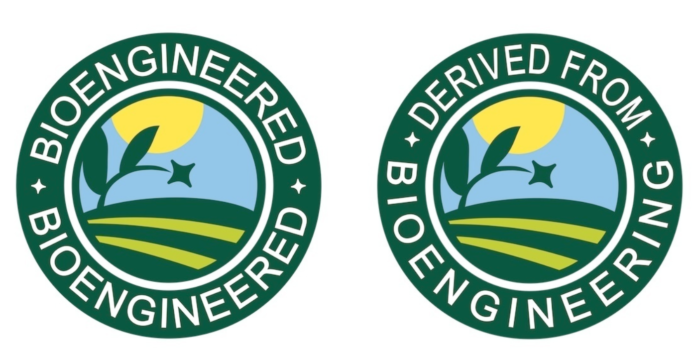
Last week, the USDA released the new mandatory standard for disclosing genetically modified foods. The standard requires food manufacturers, importers, and retailers to disclose when foods contain genetically modified material.
The stated goal is to increase transparency of the food system, but many critics — including leading food companies — believe the new standard doesn’t achieve that objective.
Requirements under the new standard
What is a bioengineered food?
The standard defines bioengineered foods as food containing detectable genetic material that has been modified in the lab in ways that could not be achieved through breeding or otherwise found in nature.
The Agricultural Marketing Service (AMS) keeps a list of bioengineered foods available throughout the world. Foods on this list must be disclosed unless records can prove they’re not bioengineered.
How should manufacturers, importers, and retailers disclose BE foods?
The disclosures must be made on the information panel adjacent to the manufacturer/distributor information, the principal display panel, or, if the first two aren’t feasible, “any other panel likely to be seen by a consumer under ordinary shopping conditions.”
There are four options for what the disclosure looks like:
- On-package text, such as “Bioengineered Food” or “Contains a Bioengineered Food Ingredient.”
- USDA-approved symbol.
- Electronic or digital disclosure
- Text message disclosure
Small food manufacturers have an additional option to provide a phone number or website where consumers can find more information. Disclosures on very small packages may also be made via URL. Disclosures on bulk foods are the responsibility of the retailer.
When is the compliance deadline?
For most food manufacturers, the implementation date is January 1, 2020. For small food manufacturers, it’s January 1, 2021. The mandatory compliance date is January 1, 2022.
For more information, including the recordkeeping requirements and consequences of noncompliance, see the USDA’s fact sheet.
In support of the new standard
Many industry groups came out in praise of the new standard, noting that it gives consumers the information they want while also supporting necessary innovation.
- American Farm Bureau Federation president Zippy Duvall: “The rule is a victory not only for consumers who want transparency but for the entire food value chain, from the farmer to food manufacturers. It provides clarity to the marketplace so that consumers can make informed decisions on the issues that matter to them, and protects the innovation that is critical to the sustainability of agriculture.”
- Biotechnology Innovation Organization: “The final rule provides a mechanism for consumers to access clear, consistent and truthful information about food in a way that does not stigmatize the role of technology in food production.”
- Center for Responsible Nutrition president and CEO Steve Mister: “The Final Rule advances transparency for consumers about the presence of bioengineered (BE) material in both food and dietary supplement products…USDA has struck a careful balance between empowering consumers to make informed decisions about the food and dietary supplement products they purchase while not creating unnecessary regulatory burdens or misleading warnings about these products.”
- Food Marketing Institute president and CEO Leslie G. Sarasin: “FMI commends USDA for introducing a more precise vocabulary into the public discourse regarding biotechnology in food production.”
Criticisms of the new standard
Not everyone is happy with the new standard, including food companies that have been leaders in the movement toward transparency.
The Sustainable Food Policy Alliance, whose founding members are Danone North America, Mars, Incorporated, Nestlé USA, and Unilever United States, wrote: “The Sustainable Food Policy Alliance continues to review the rule. We remain concerned, however, that the standards fall short of consumer expectations, and the practices of leading food companies, particularly when it comes to how we are already disclosing highly refined ingredients and the threshold for disclosure. Our member companies will continue to take strong, proactive steps to meet consumer expectations for transparency – and we encourage others in the industry to do the same.”
Here are the main criticisms.
Terms like “genetically engineering” and “GMO” are prohibited
“Bioengineered,” or “BE,” is used instead, which may be unclear to consumers who might not have heard this term before.
The Center for Food Safety (CFS) argues that this is misleading because most consumers associate the word “bioengineered” with biomedical technology. “Genetic engineering and GMO have been the terms used by consumers, companies, and regulators for over 30 years,” they write. “Many food companies have long used the terms genetic engineered, GE, or GMO, and thousands of products are currently labeled as such (e.g., Non-GMO).”
The genetic material must be detectable, which exempts some highly processed foods that consumers expect to be labeled
For some highly processed ingredients derived from genetically engineered crops, like oils, starches, and sugars, disclosure won’t be mandatory because they are chemically indistinguishable from their non-GMO counterparts.
“Despite this,” Gregory Jaffe, the biotechnology director for the Center for Science in the Public Interest, writes, “most studies have shown that consumers expect highly processed ingredients to be labeled and many food manufacturers want to provide that information.”
The CFS claims that because of this exemption, “the majority of GE [genetically engineered] foods would not be labeled.” They also criticize the 5% threshold for the unintended presence of GE ingredients (for comparison, the EU standard is 0.9%), which means that “highly refined products made from GE crops, such as cooking oils, candies, and sodas, would be exempted if current testing methods are unable to detect their GE content, even though rapidly evolving test methods detect GE content in products once thought to be free of it.”
These highly processed ingredients can still be disclosed voluntarily, but Jaffe argues that will add to the confusion because some manufacturers will make these disclosures while others won’t.
The digital disclosure option is discriminatory
The standard allows companies to use digital disclosures, like QR codes or text messages, rather than on-package text or symbols. This means that to obtain the information in real time, consumers must have a smartphone and an internet connection.
The CFS points out that these technologies are often lacking in rural areas, and that some consumers are charged fees for text messages. “As a result, this labeling option discriminates against more than 100 million Americans who do not have access to this technology,” they write.
A 2017 USDA study validated this claim, finding that low-income earners, rural residents, and seniors are most likely to be adversely impacted by technology challenges. “On-package text or symbol labeling is the only fair and effective means of disclosure for GE foods,” said CFS executive director Andrew Kimbrell.
The rule doesn’t address the labeling of foods as “non-GMO”
Finally, the rule doesn’t provide any guidance for labeling foods “non-GMO.” Jaffe notes that these labels, which are becoming more common, are misleading because the foods — like water, salt, and orange juice — don’t have any bioengineered counterpart. Jaffe says that manufacturers that label these foods non-GMO are “[taking] advantage of consumers’ lack of knowledge to suggest their products are different from similar non-labeled products.”






![[Infographic] Are Spreadsheets Killing Your Batch Manufacturing Business?](https://foodindustryexecutive.com/wp-content/uploads/2025/12/ECI-MFG-AreSpreadsheetsKillingYourBusiness-2025-Email-1-324x160.jpg)